


The Cathedral of St. James, the jewel of the Armenian Patriarchate of Jerusalem, lies just beyond its entry gate. It has been built on the site of the tombs of St. James, the Apostle, and St. James the brother of the Lord. A magnificent edifice dating from the 12th century with mostly 18th century decoration because of the renewal work carried out by the late Patriarch, Gregory the Chainbearer (1715-1749), it ranks as one of the most awe-inspiring in all of the Middle East. At the entrance to the Cathedral, a large plaque marks the site of the grave of Jerusalem's 94th Armenian Patriarch, the late Archbishop Guregh Israelian. One of the city's most popular and charismatic men of the cloth. Israelian died in 1949, of a broken heart it is said, after witnessing the intolerable suffering of his war-ravaged flock, caught in the crossfire of war-time. hostilities. More than once, he would cradle in his own arms, the shrapnel- shredded body of an Armenian who had been the latest casualty in the unrelenting war. Another unpretentious grave sits under an archway a few paces away, at the other end of the vestibule. This one is the last resting place of the Armenian Patriarch, Abraham, a contemporary of Saladdin. Upon entering t h e Cathedral, one is immediately captivated by the interior bedecked by centuries old "ganteghs" (oil l a m p s ) dangling from the soaring vaulted dome and t a l l o w candles dotting the three altars. The only source of light, the oil lamps, are still lovingly tended by altar boys who replenish them with oil at regular intervals. The candles, made by the Patriarchate's own candle-maker, try vainly to dispel the elemental darkness that pervades the church, imparting a mystical significance to Armenian church rites. To the left of the entrance are three small chapels. The first from the entrance contains the tomb of Makarios, the bishop of Jerusalem in the fourth century. The third from the entrance is the shrine where the head of St. James the Apostle is entombed. Armenians believe that he was buried here in the first century after his execution by King Herod Agrippa I. In the chancel, beyond the fence, are two thrones. The one closest to the pier with the canopy is the symbolic throne of St. James, the brother of the Lord, and first bishop of Jerusalem, who is buried beneath the high altar. The Patriarch stands in front of this throne once a year on the feast of St. James in early January to symbolize his place in the succession of the bishops of Jerusalem. The other throne is the one normally used by the Patriarch. The Cathedral has in the past also served as a bomb shelter. During the 1948 Arab- Israeli war, the only sanctuary from the daily bombardment of the city that the Armenians could find was within the solid, reassuring confines of their Cathedral, with its one-meter thick walls. During one particularly memorable night, over 1,000 shells of all kinds, including the dreaded mortar, landed on and around the Cathedral. But not a single casualty did they claim. Many believers would later swear that they had seen a mysterious figure, dressed in white, standing vigil on the roof of the Cathedral, warding off the shower of missiles with his hands. Believers assert that it was none other than St. James the Elder.
Armenian Jerusalem
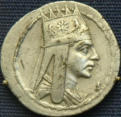
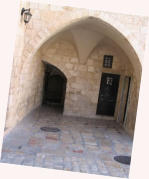
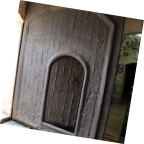
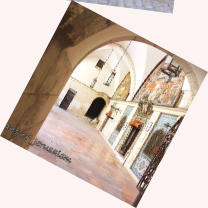
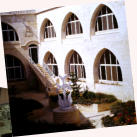
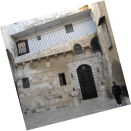
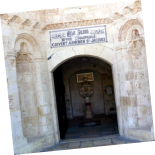

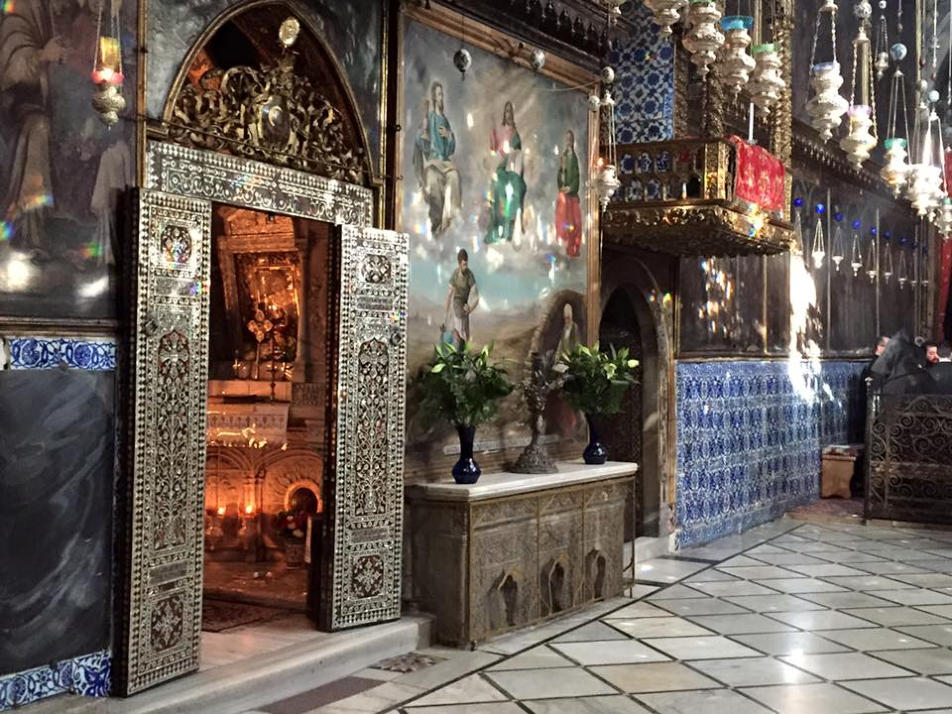


the most magnificent Cathedral in Jerusalem





















